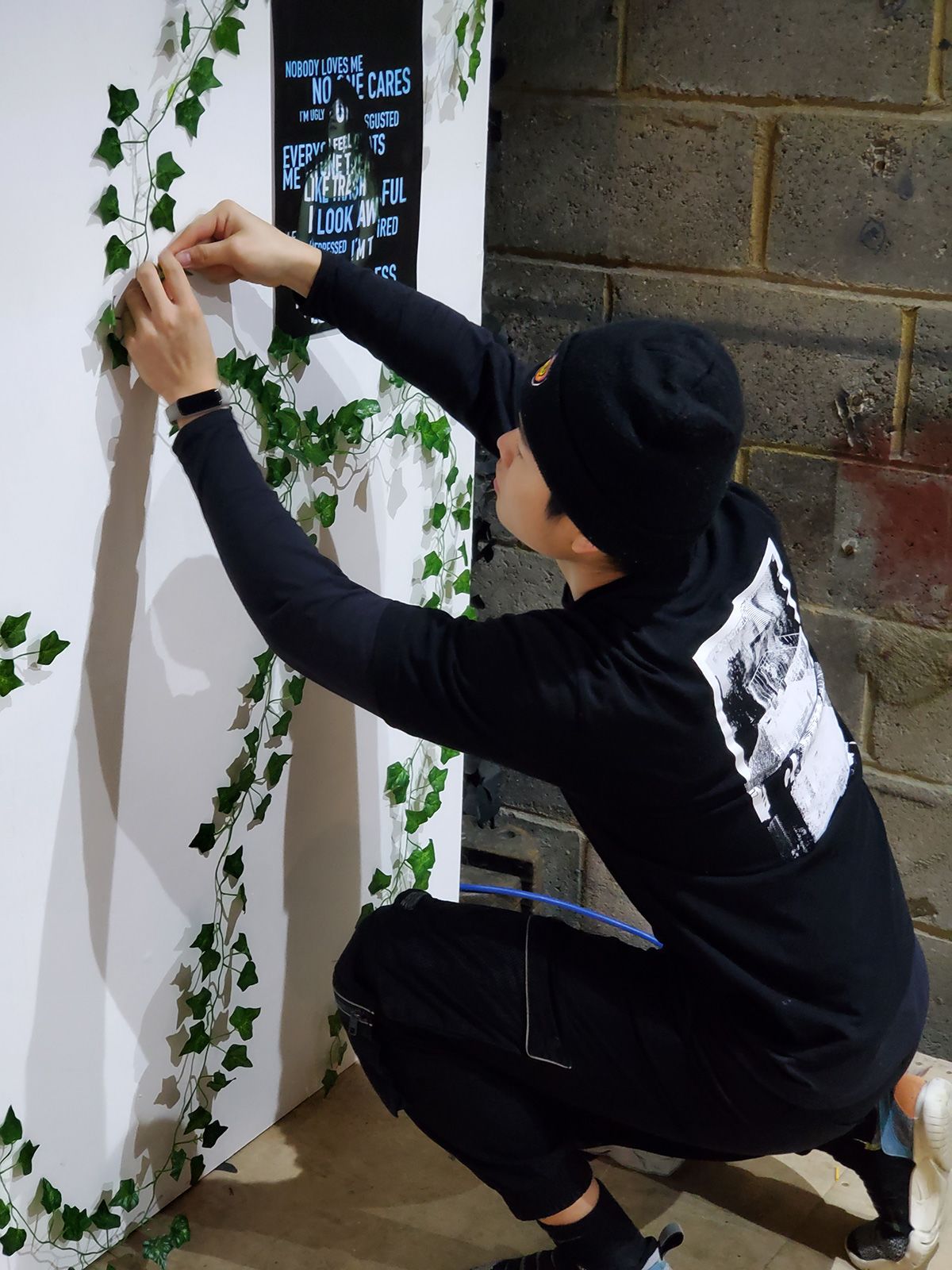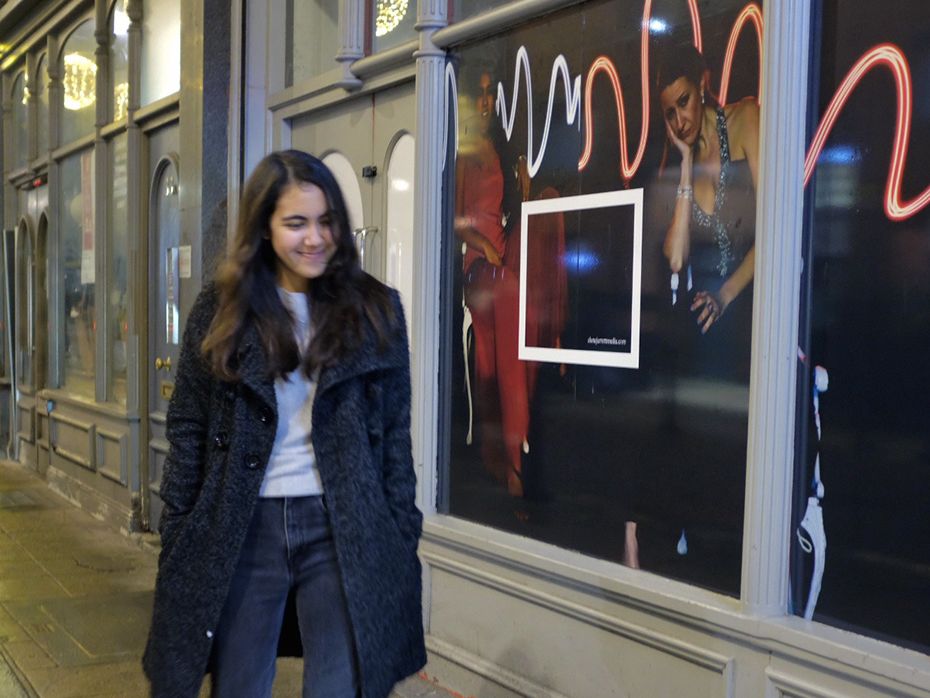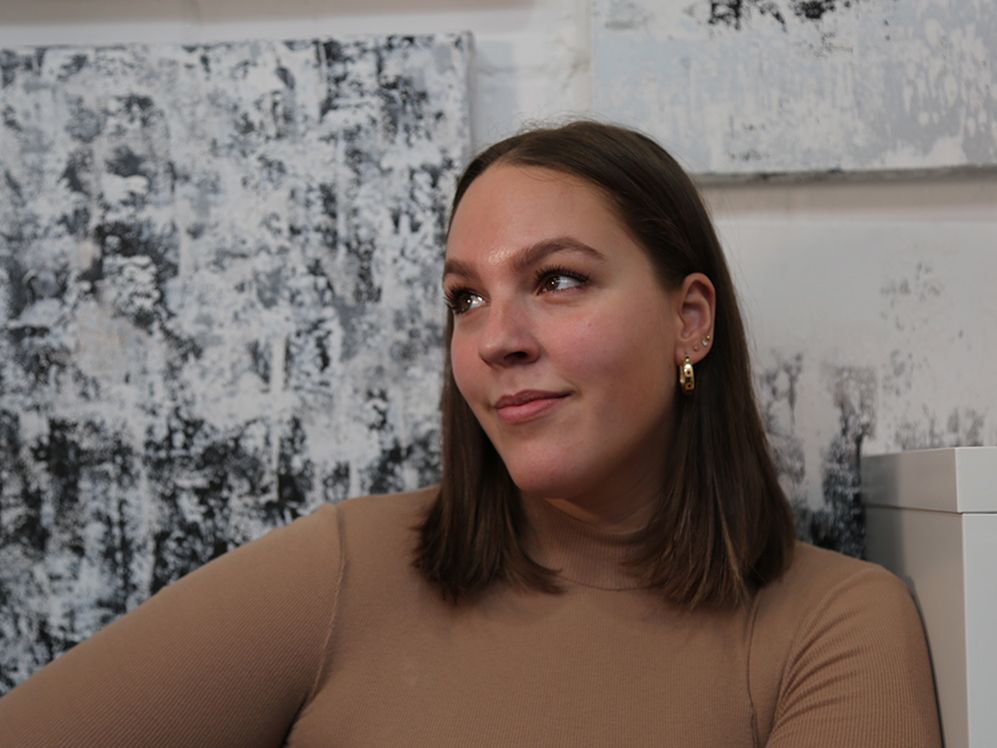
BA (Hons) Contemporary Media Cultures students host ‘This is How We Die’ exhibition

- Written byChloe Murphy
- Published date 12 April 2022

London College of Communication (LCC) is home to makers, thinkers and innovators who are passionate about responding to the world’s most pressing issues: not only as individual practitioners, but as wider creative collectives.
From explorations of social movements to projects that emphasise the importance of sustainability, our staff and students develop work that reflects on the impact of the latest global shifts and proposes potential solutions to major challenges.
This thread of social awareness and responsibility is woven through our BA (Hons) Contemporary Media Cultures course, which enables students to explore what it means to study the fields of media and culture through contemporary contexts and critical perspectives. Underpinned by theory, students are also given opportunities to put their creative ideas into practice, gaining a robust understanding of diverse industry approaches and the wider creative landscape.
One such opportunity includes their recent course exhibition, This is How We Die, which was developed as part of the Year 3 Critical Practitioner unit in Winter 2021. Featuring work ranging from photography to film installations, students were asked to consider the stark realities of the climate crisis across both natural and urban environments. Showcasing new and imaginative ways of exploring an urgent pressure of modern times, they were able to bring their theoretical knowledge to life while gaining curation experience through the development of a physical show in Brixton.
This was further complemented by the latest edition of the student-led course magazine, NEBULA, which provided readers with examples of insightful writing and thought-provoking analysis around issues of sustainability and environmentalism.
We caught up with 2 students who participated in the exhibition, Neelam Tabassum and Stanley Chiu, about the inspiration behind their creative work, how they were able to support the complex process of developing an exhibition space, and highlights from their time at LCC so far.

Have you always been interested in the field of media cultures, or is this an area you've moved towards over time?
Neelam: My interest in media cultures has always existed thanks to my obsession with social media. As someone born in Gen Z, I’ve been comfortable with using media in everyday life from a young age, and this eventually stemmed into a sense of curiosity about the evolution of media and technology.
As I grew older, I began to think of media developments in relation to capitalism, along with the positive and negative effects that this can have on society and the way we are today.
Stanley: I grew up loving acting, but started exploring film and photography in my teens. I found myself getting film production gigs more than the acting gigs I might've hoped for, which then elevated my interest in media.
I also enjoyed learning about history and cultural studies, and I think that enrolling on my course truly solidified my interest in the field.
Why did you decide to study on BA (Hons) Contemporary Media Cultures at LCC?
Neelam: I wanted to study media at UAL, and when searching for the right course, I came across BA (Hons) Contemporary Media Cultures (CMC).
As a more theoretical practitioner, I felt this course was the perfect fit as it allowed me to familiarise myself with important academic concepts whilst also experiencing various practical elements such as photography, filmmaking, blogging, and ultimately organising an exhibition, which I loved.
Stanley: I applied to my local university in Hong Kong which provided the CMC course remotely in 2019. Being able to transfer to London for my final year was an opportunity that I saw myself taking, and knowing that the career opportunities would be much more promising in the UK, I took a leap of faith and transferred after studying my first 2 years back home.

Where did you first find out about the exhibition opportunity, and why did you decide to take part?
Neelam: For our Critical Practitioner unit, we had the option to create either a magazine or an artwork for an exhibition. Since the pandemic had greatly impacted many of the practical elements linked to my course, I knew that this would be my first and (unfortunately) last chance to use College resources to create a piece of original work, so I chose to exhibit an artwork instead and get really absorbed into my project.
Stanley: I was reading the course details on my flight to London and realised there were 2 paths for the Critical Practitioner unit. I’m interested in making my own work, and after finding out that one path offered the opportunity to hold your own exhibition with your own media piece, I knew I had to take it.
How did you participate in the development of This is How We Die?
Neelam: We were asked to create an artwork that explored urban contexts whilst also relating to the environmental crisis. My role was to exhibit my work and assist with setting up the exhibition.
I helped prepare by clearing out the venue, and then building and painting the walls where we were going to hang our works in order to ensure the space looked the best it could. I also assisted my peers, and took the initiative to figure out a lot of things so that everyone would know what to do: for example, how we could print our works and display them in frames.
I wanted to be actively involved, and to make sure that everyone was comfortable and on track for our first practical degree piece.
Stanley: I showcased my personal project which stemmed from an idea around 'what if the earth had emotions?', which involves the use of projection photography, making the piece interactive. I made my own projection photography prints, and projected photos and graphics that I'd created onto the centre of the wall so that viewers were able to make their own projection photographs.
For the exhibition itself, I helped to construct the walls for student artwork and assist with promotion by creating a dedicated QR code that links to all exhibition details and our exhibition website.

Take us through your creative process: what inspired the initial ideas for your work, and how did you develop them?
Neelam: My initial ideas were inspired by my phone’s camera roll - the random scenery pictures I take when I go out, and the art pieces I like to capture when visiting other exhibitions.
My piece focused on a place I regularly visit, the Barbican Estate, and explored how nature is used for aesthetic purposes within modern brutalist architecture. My intention was to show that we should increase vegetation in cities because it’s a ‘pretty thing to look at’ rather than just purely for environmental benefits; I wanted my audience to focus on the positives rather than only the harsh realities of the complex environments around us.
When deciding how to frame my work, I wanted to remain authentic to the environmental cause, so I used recycled dibond material and cut it down to create my frames myself. Throughout the whole process, I just kept thinking ‘ENVIRONMENT’ and nothing else.
Stanley: As soon as I was given the brief for our exhibition, I was immediately drawn to projection photography and the idea of having an audience become part of a piece. Enabling people to create their own interpretation of a work instead of just looking at it was something that especially intrigued me.
As our theme was ‘The environment and the land/city’, I thought hard about a personal subject that could deliver my ideas on the environmental crisis while applying those ideas to real life. Being a strong advocate for - and a person with personal experience of – the importance of mental health, I decided to humanise the earth itself. What if the Earth could say things like ‘no one loves me’ or ‘I feel ugly’? These comments may seem like they could only be applied to living things, but I hoped to challenge the idea and suggest that maybe we should apply these emotions to the one place that gives us life.
As for development, I first drafted up a few ideas on the set-up for my wall. I then invited a few friends to become models, took pictures of them using projection photography, printed the pictures out, and then put them up as an example of what audiences could make themselves on the wall.
It was a long and challenging process, but seeing my final project come to life was definitely worth all the hard work.

What were your highlights of taking part in the exhibition?
Neelam: My favourite part was our exhibition day, where we all got to see each other’s final pieces and hang out for the first time. The pandemic stretched over the length of our course, so this was the first time that many of us had even spoken to each other. To be able to see each other outside of regular class settings whilst also celebrating our efforts was a pretty good feeling.
Meeting our lecturer Jeroen Van Dooren was great: he allowed us to take control of our lessons, and it was greatly appreciated. He’s one of the best lecturers we’ve ever had, and he also fought very hard to get us an exhibition venue.
Stanley: There’s too much to mention, but I think the major highlight would be the experience itself: taking photos with my friends, music on, a lot of laughter, a lot of stunning pictures. We had a great time.
Another would be the setting up of the exhibition itself. We took an empty space in Brixton and, as a team, turned it into a stunning exhibition. There’s something about making everything from scratch that makes a project feel more personal and rewarding, and it was slightly emotional to see it all come to life.
Lastly, I think another highlight would be the moment when the exhibition space was filled with people. Having my friends there definitely made it all the better, and to have strangers approach me and ask about my work made me feel like I was a true artist. Some accomplishment, eh?

What have you most enjoyed about your time as a student at LCC?
Neelam: I really enjoyed the first term of our first year before the pandemic. Now, it’s great to be back at uni and at a point in not just my academic career but my life in general where everything is in place and making more sense. I’m enjoying my classes, have gotten more familiar with my lecturers, and feel more confident in my abilities.
Stanley: My time as a student at LCC has definitely been short as I’ve only studied at the College in my final year, but I’d say that I’ve made the most of it to the best of my ability.
I’ve enjoyed the people here the most: my classmates are unbelievably talented and kind. It was undeniably a joy and honor to have worked with them on the exhibition and to have gone to class with them, have lunch with them, and just have a laugh in general. They truly are a spectacular group.
Who would you recommend BA (Hons) Contemporary Media Cultures to?
Neelam: I think that the course is best suited to people who don’t have a specific idea of what they want to do in the future. It educates you on modern cultural topics and gives you a wide variety of practical elements to try out.
It’s a great course to help you figure out what you like and don’t like because every module is diverse, and all of our lecturers are from different professional backgrounds.
Stanley: I would say that if you’re interested in making a statement or a change to the world through the use of media, this would definitely be the course to take. The amount of cultural topics and studies we cover are eye-opening, and the most attractive part is that there’s no limitation to what kind of art or media you can use to present your ideas.
The world is your oyster in this course, and you can honestly make your own statement and create anything as fantastic as you desire.
Related links:
- Read more about This is How We Die on the Contemporary Media Cultures course blog.
- Explore BA (Hons) Contemporary Media Cultures at London College of Communication.
- Learn more about our Media School.
- Experience life at LCC through our interactive Virtual Open Day.



